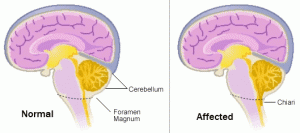by Jackie Marcoux, University of Massachusetts Lowell
What comes to mind when you hear the word education? It is likely that images of school buildings, classrooms, and teachers lecturing on a particular subject all come to mind. While any image you conjured up is valid, did you come up with any images of education occurring outside of the traditional spaces associated? How about the school yard? The grocery store? Your neighborhood?
I have dedicated my life to education. When I first began my journey towards educating others, I too thought the only way was through the traditional idea of a classroom. As I progressed through my undergraduate career as an Elementary/Special Education major I began to realize that world was not where I fit in. I didn’t want to be standing in front of elementary school kids teaching them spelling and math.
My experience as a Resident Assistant made me realize I wanted to work with college students but again not as a professor at the front of the room. As an RA I encountered so many students who were uneducated on some of the most vital life skills and knowledge. There were students who didn’t know where to get a condom or a dam (assuming they knew female condoms existed), didn’t know how to ask for help academically or personally, didn’t know how to interact with people different from themselves; the list could go on. My job as an RA was to educate my residents as much as I could on the issues that were relevant to them. I took this idea and ran with it.
I created a theater based peer education group at my alma mater that tries to address these issues. The most important event that the group puts on to educate students is a performance at freshmen orientation. In the first performance we covered issues of drinking, sexual violence, and partner violence. This past year we addressed suicide, same sex sexual assault, verbal abuse, and anxiety. After each performance there would be students who would approach us to ask further questions, thank us for performing, or ask how to get involved. Everyone involved, be it participants in the show or audience members, where being educated and learning something new.
Outside of the explicit opportunities for education that I built or sought out, I am also an ambassador of education every day. When I walk by with my service dog I am educating someone new. Maybe they didn’t know a service dog could go everywhere with me. Perhaps they didn’t know that a service dog for individuals with a hearing loss existed. Maybe they want to know more about what a service dog does and how a dog becomes a service dog. Every time I am stopped and a question is asked about my service dog is a moment when I am an educator.
All this adds up to a natural connection with Community Social Psychology. To me, the core of CSP is providing people with education and the ability to learn and grow. The education may come from a program explicitly created to address an issue. It could also come from teaching people how build capacity and make change from and for themselves. It comes from making connections with people and bridging the gaps in order to be successful as a community. I may not be a teacher in the traditional form but with my CSP education I hope to be a teacher that everyone can access.
#commpsych
Jackie Marcoux is a graduate student in Community Social Psychology Department at the University of Massachusetts Lowell.

